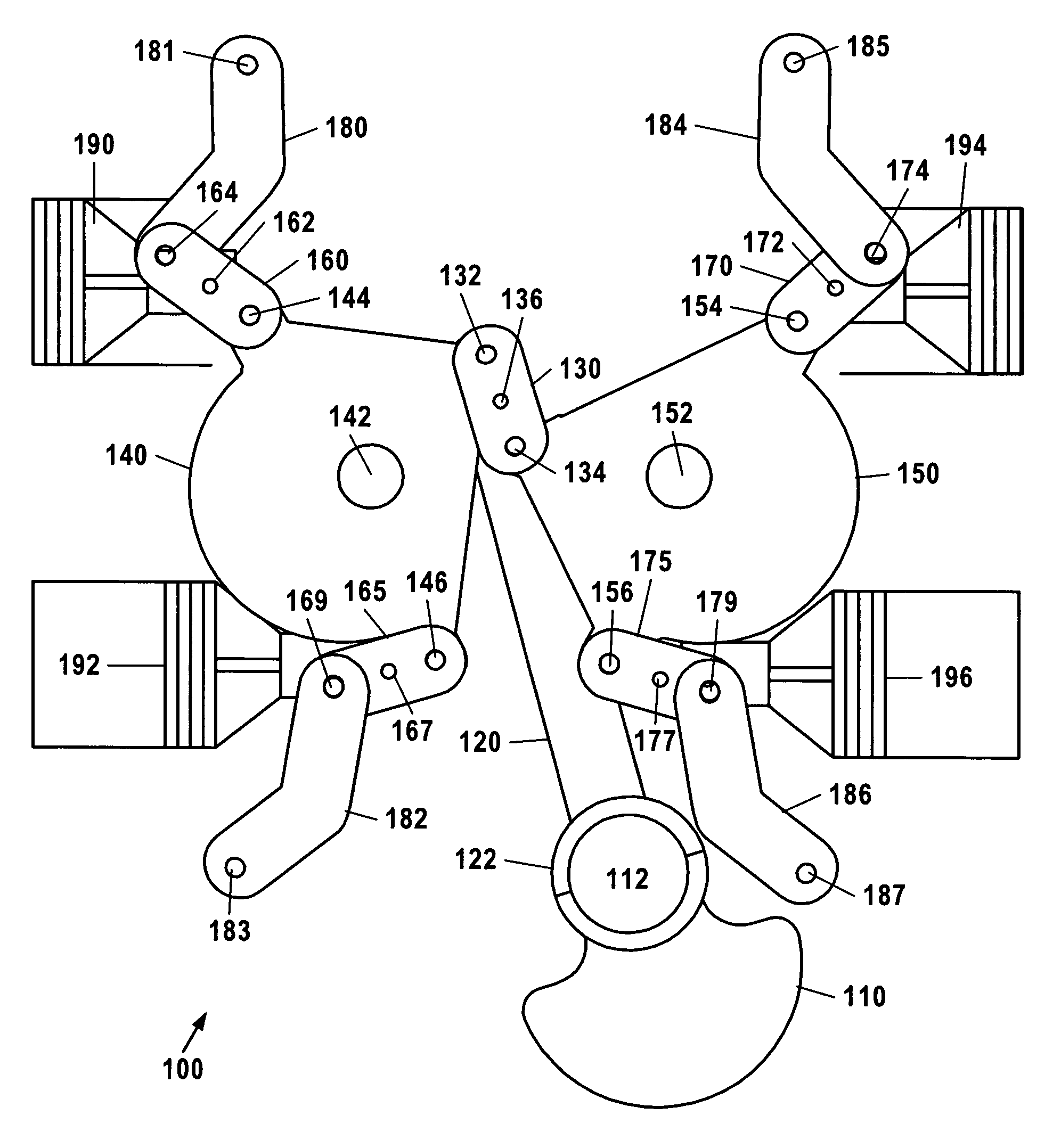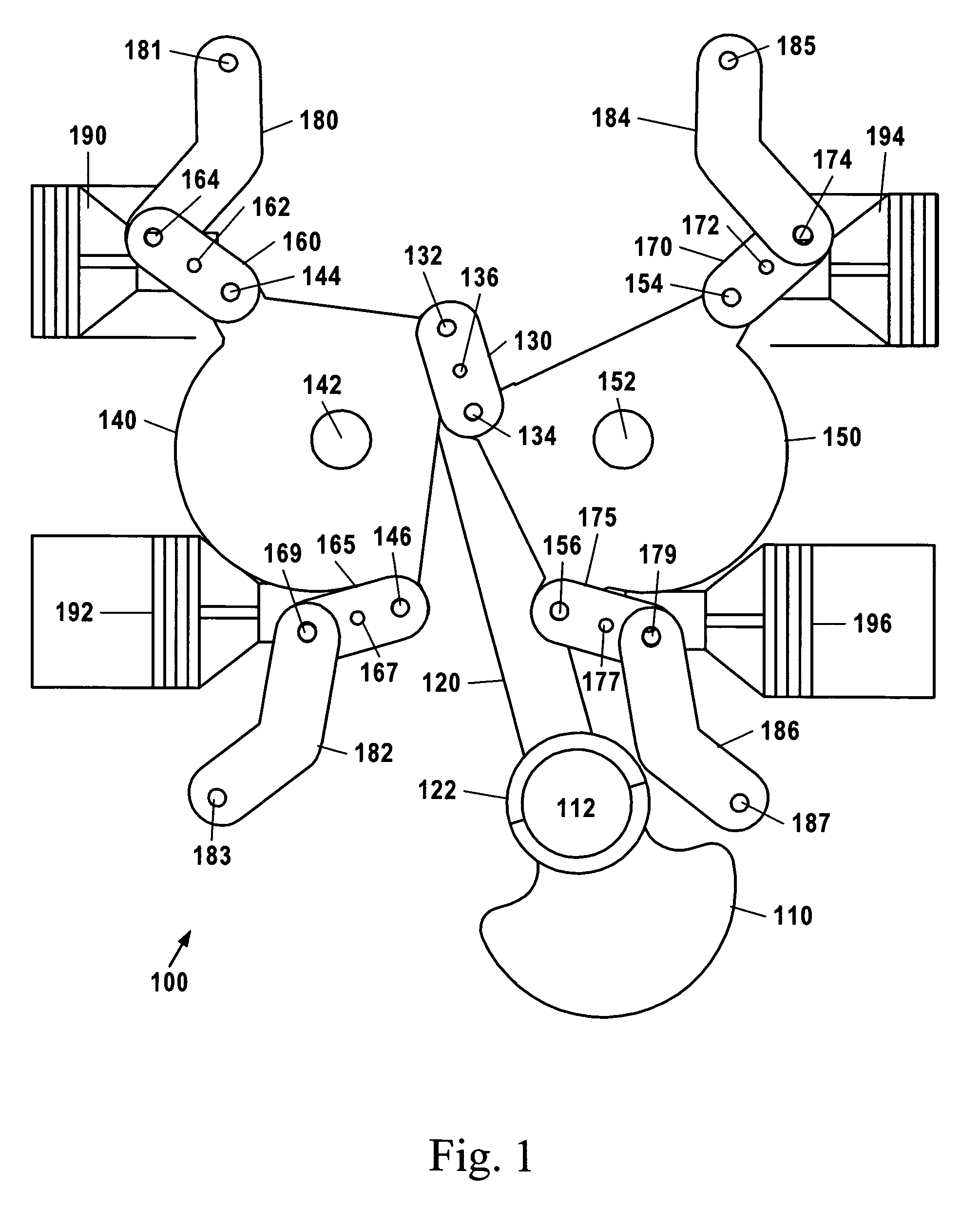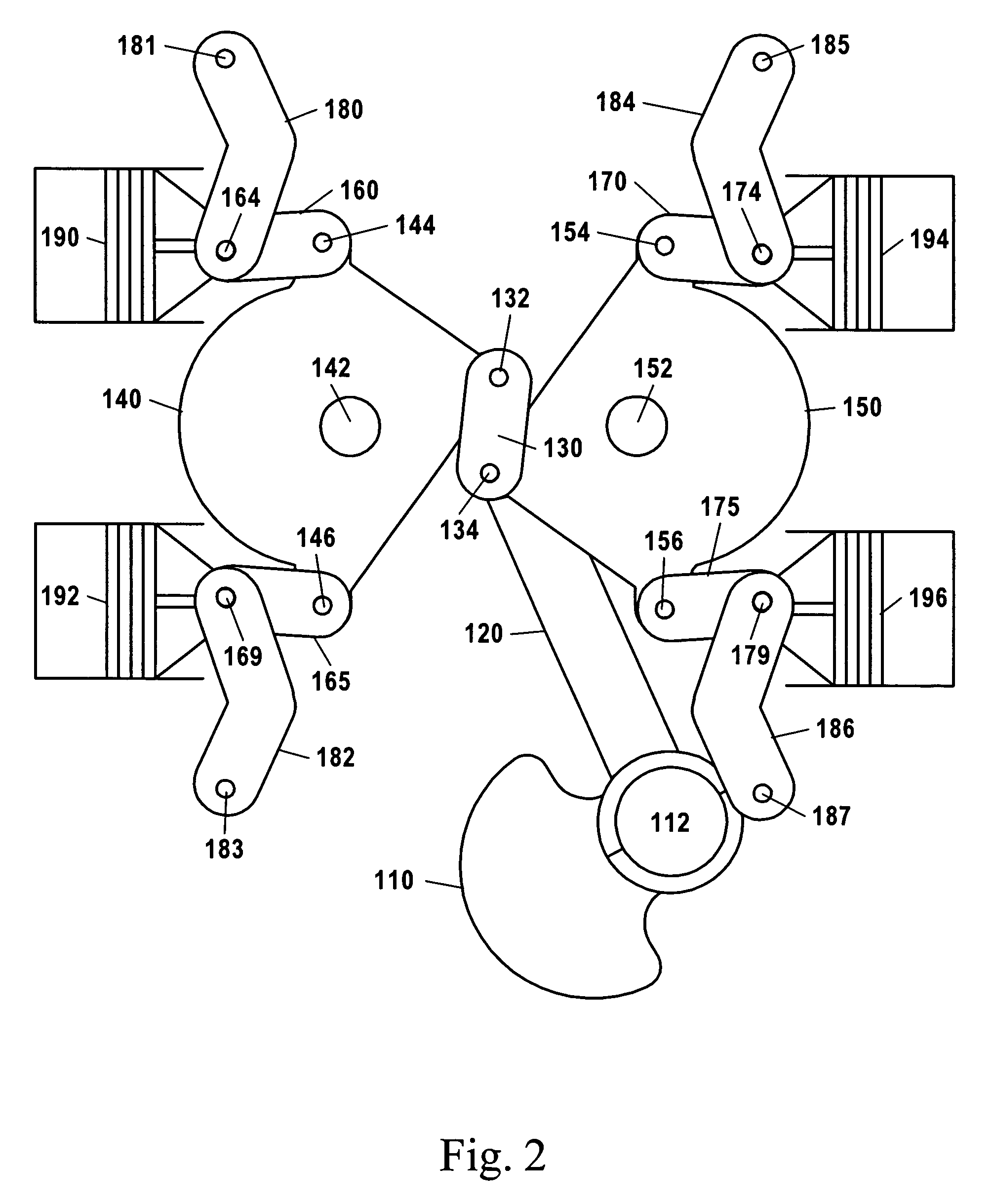Force transfer mechanism for an engine
- Summary
- Abstract
- Description
- Claims
- Application Information
AI Technical Summary
Benefits of technology
Problems solved by technology
Method used
Image
Examples
Embodiment Construction
[0040]Before the subject invention is described further, it is to be understood that the invention is not limited to the particular embodiments of the invention described below or depicted in the drawings. Many modifications may be made to adapt or modify a depicted embodiment without departing from the objective, spirit and scope of the present invention Therefore, it should be understood that, unless otherwise specified, this invention is not to be limited to the specific details shown and described herein, and all such modifications are intended to be within the scope of the claims made herein.
[0041]FIGS. 1-3 are views of one embodiment of a force transfer mechanism 100 according to the present invention. Force transfer mechanism 100 comprises a three-arm bell crank 140 driven by pistons 190 and 192 and another three-arm bell crank 150 driven by pistons 194 and 196. FIG. 1 shows pistons 190 and 194 at top dead center and pistons 192 and 196 at bottom dead center. FIG. 2 shows eac...
PUM
 Login to View More
Login to View More Abstract
Description
Claims
Application Information
 Login to View More
Login to View More - R&D
- Intellectual Property
- Life Sciences
- Materials
- Tech Scout
- Unparalleled Data Quality
- Higher Quality Content
- 60% Fewer Hallucinations
Browse by: Latest US Patents, China's latest patents, Technical Efficacy Thesaurus, Application Domain, Technology Topic, Popular Technical Reports.
© 2025 PatSnap. All rights reserved.Legal|Privacy policy|Modern Slavery Act Transparency Statement|Sitemap|About US| Contact US: help@patsnap.com



